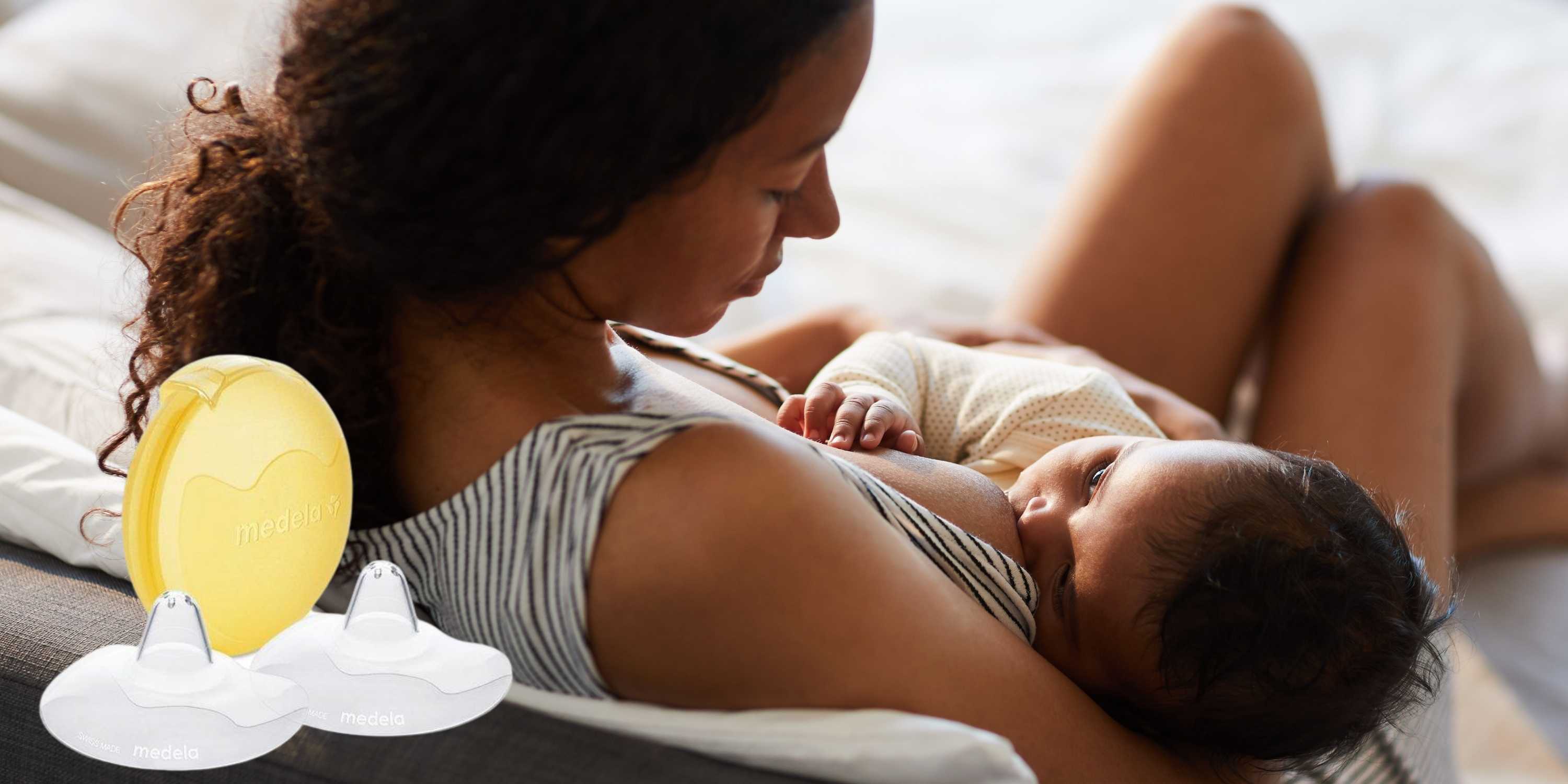No Products in the Cart

What are nipple shields and when should a breastfeeding mom use one? Sheila Janakos, MPH, IBCLC and Healthy Horizons CEO gives expert advice on nipple shields and how nursing moms can decide if a nipple shield is the right fit for their breastfeeding circumstances.
Nipple shields have been around for over a hundred years. The first was made of glass, then thick rubber. Fast forward to today, nipple shields are usually made of thin silicone. They historically have been used for 2 reasons: one, to protect nipples that were damaged; and the second purpose was to encourage the baby to latch.
Today nipple shields are routinely used for a variety of reasons. First are latching difficulties possibly due to the baby being unable to grasp the nipple and what may appear to be breast refusal. This can be due to prematurity, having a tongue tie, or may be related to the baby having a hard time attaching to mom's anatomy due to a flat nipple or breast engorgement.
Secondly, nipple shields may be used by moms who have a sore or traumatized nipple that needs protecting.
You may also choose to use a nipple shield if your nipples are cracked or sore from breastfeeding, which is fairly common in the beginning. While your nipples recover, a shield can help protect symptoms from getting worse.
Moms should look at the type of materials used. Thicker silicone is not the best option if a mom is to have the proper breast and areola stimulation and better transfer of milk. I suggest getting the thinnest silicone shield. Then determine the correct size and shape needed.
Some people look at what would work better with the baby's mouth, but realistically it still has to fit properly. You can measure the face of the nipple and determine a size range, by using a measuring tape that uses centimeters. Most nipple shields will use those units of measurement in their sizing, The nipple shield should fit well with space between the tip of the nipple and the shield. Having a nipple crammed into a shield can result in more trauma or soreness.
If the baby has a possible tongue tie, looking for nipple shields that have more of a bulb or cherry-shaped tip is helpful. If the baby is transitioning from a bottle and refuses the standard thin silicone nipple shield, this would be the only time a thicker, longer shield would be an option. it might allow the baby to practice nursing near the breast and adjust to the breast milk flow while learning to switch from the bottle.
The most important aspect of using the standard shield is to not just plop it on the nipple. The trick is to slightly invert the shield and place it over the nipple as you evert it to help create a suction. A nipple shield that is not suctioned on might slip around and cause the baby to lose the latch. Another trick is to use some tacky nipple cream or proper medical tape to keep them in place.